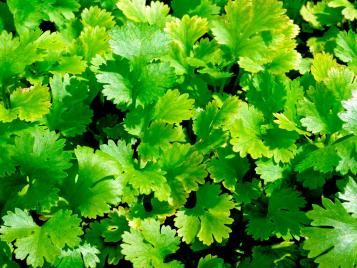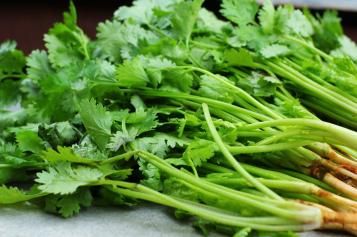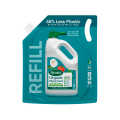

How to Grow Coriander
Coriander, also known in some countries as cilantro, is a very popular herb grown mainly for its green leaves and its spicy seeds. This herb is a must in salads and as a fragrant green addition to Indian, Thai and Chinese curries. The seeds are a vital ingredient in curry powder.
Keep in mind that the stalks and roots are just as tasty as the leaves when thoroughly washed and chopped finely – they are often included in Thai dishes in particular. Read on to discover how to grow coriander at home.
JUMP TO:
- Types of coriander
- Essential equipment to grow coriander
- Where to grow coriander
- How to plant coriander from seeds
- Coriander plant care
- How to harvest coriander
- How to store coriander
- Common coriander diseases & pests
Types of coriander
Coriander is usually available as the species (Coriandrum sativum), although some retailers may promote ‘slow-’ or ‘no-bolt’ varieties, which don’t flower or set seed as quickly as the species type may do.

Essential equipment to grow coriander
Growing coriander requires very little equipment. Here's what you'll need:
- Coriander seeds
- A suitable pot with drainage holes
- Scotts Osmocote® Tomato, Vegetable & Herb Potting Mix
- All purpose liquid fertiliser.
Where to grow coriander
Outdoors, coriander prefers a cool position and light shade with very well-drained soil. In direct sun it may tend to bolt quickly.
Coriander is most commonly grown in a pot - either in a little shade on the patio or on a windowsill that doesn't receive direct sunlight in summer and doesn't get too hot.
How to plant coriander from seeds
How to plant coriander seeds and young coriander plants
To grow coriander from seed, sow coriander seeds directly into the veggie or herb garden where you want the plants to grow.
- Sow into well-prepared, moist soil.
- Sow a few seeds at monthly intervals from August to March for a continuous supply of leaves.
You can also grow it in 15-30cm pots, sowing a few seeds in each every 6-8 weeks to have a constant supply of fresh leaves throughout the year.
Young plants are usually available from garden centres in spring and summer too. You can plant these out or pot them up into slightly larger pots.
Watch our helpful video below to learn more about how to grow and care for coriander.
Coriander plant care
When sowing outdoors, thin seedlings out to 5-7.5cm apart. If you specifically want to grow it to collect its seeds, grow at 20-25cm apart.
Keep the soil or potting mix moist as it tends to run to seed if allowed to dry out, but take care not to overwater - especially in autumn and winter - as too much water can lead to rotting.
Give coriander plants a light liquid feed of a liquid fertiliser every couple of weeks during late spring and summer. This will help ensure plants go on producing a constant supply of leaves. Don't use high potash fertilisers as these will encourage premature flowering.
If coriander plants become stressed they will run to seed quickly and the leaves start to lose their flavour once flowering begins. This is fine if you want to harvest seeds, but otherwise discard the plants.
How to harvest coriander
Start harvesting the leaves when they are bright green and young and the plants are 10-15cm tall.
You can treat plants as a cut-and-come-again crop. Otherwise, let them run to seed and allow the seeds to develop on the plant. Harvest them before they are shed.

How to store coriander
If stored correctly in the fridge, freshly harvested coriander can stay fresh for up to two weeks.
All you need to do is put your picked coriander in a reusable plastic bag or zip lock bag. Make sure it is sealed and closed correctly (and not left open) and simply place it in the fridge. Every time you use some, always remember to close the bag properly before you put it back in the fridge.
Common coriander diseases & pests
Slugs and snails will feed on young coriander seedlings. They can be identified by the slime trails that they leave, as well as the damage they do.
- Check plants at night and remove slugs and snails by hand.
- Covering the soil around plants with crushed eggshells or grit may have some effect.
Scatter snail and slug pellets if other methods are inadequate.
Aphids are sap-sucking insects which can quickly infest young plants, stunting growth.
- Wipe off small colonies of aphids on coriander with a damp cloth.
- Encourage natural predators like ladybirds and hoverflies.
Pesticide sprays are available for aphids – make sure they can be used on edible plants.
Bolting occurs when coriander plants produce flowers and set seed early, before you have had a chance to harvest fresh, tasty leaves and stalks. As they are annuals, the plants will die once they have set seed. Bolting can be triggered by stress, such as sudden dry periods.
- Plant bolt-resistant varieties if they are available.
- Water regularly.
Sow new seeds every few weeks to ensure a constant supply of leaves.
Whether you’re growing veggies in your garden or caring for your plants, sign up to our newsletter for all your essential tips and tricks – plus special offers, promotions and competitions – delivered right to your inbox.



